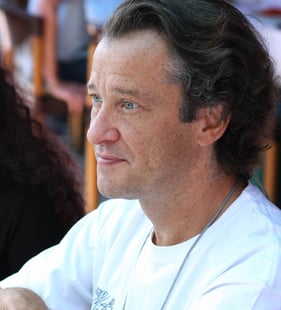

ANIMAFEST PRO | ANIMAFEST SCANNER VI | SYMPOSIUM FOR CONTEMPORARY ANIMATION STUDIES | ANIMAFEST SCANNER VI - PANEL 4: ANIMATION AND EDUCATION
Animation Techniques and Graphic Style in Representation of Deep Space - Olivier Cotte
From Méliès to the last Hollywood CGI productions, the cinematographic creation of visual deep space has employed many animation techniques and artistic approaches. All these visions are destined to give a specific look to documentaries, animation films, or live-action films FX. They all have their own visual style. Even the cartoon has developed its own perception for humoristic purpose. For a long time, most of the depictions were more poetic or pictorial rather than scientifically plausible. Directors and art director always wanted to express this specific location in personal and often fancy ways. Scientific accuracy was not always an absolute necessity: the final image and its dynamic depended on the project and its purpose, as well as the scientific knowledge of the time of the making. In other words, for expressive reasons, it was often more appropriate to twist reality in order to express the artistic or cultural expression of space rather than to get a realistic and cold, objective view of it. How did this representation of deep space evolve through the history of cinema from the silent times to the last production? Why animation techniques were so necessary to put all these conceptualisations on the screen? Is a deep space easier to put in a movie theatre rather than on TV or DPA displays? How to give the feeling of the immensity of the universe in a single enclosed field? What are the difficulties of representing the three-dimensional dimension of the sky and its enormous scale? Why offering the right feeling to the audience is often so delicate? How have the approach and techniques changed at the end of the 60s? What are the main styles used today? From matte painting to stereoscopic CGI through stop motion, let’s explore all the different ways to picture this dimension that always had fascinated the human being.
Olivier Cotte studied classical dance, fine arts and classical music, and worked as a computer artist for animation shorts, commercials and 15 live action features. He began to direct animated films at the age of 14 and use mostly mixed frame by frame and live action. As an animation historian, he wrote a dozen of books, including a worldwide encyclopaedia (100 ans de cinéma d’animation), an encyclopaedia about animation techniques, two monographs, a study about 13 animated shorts awarded by an Oscar, and many collective works. He teaches history and aesthetic of animation, digital techniques, and mise-enscène at Penninghen in France and abroad. He is also an awarded graphic novels’ scriptwriter, and has written or translated several books about scriptwriting.


